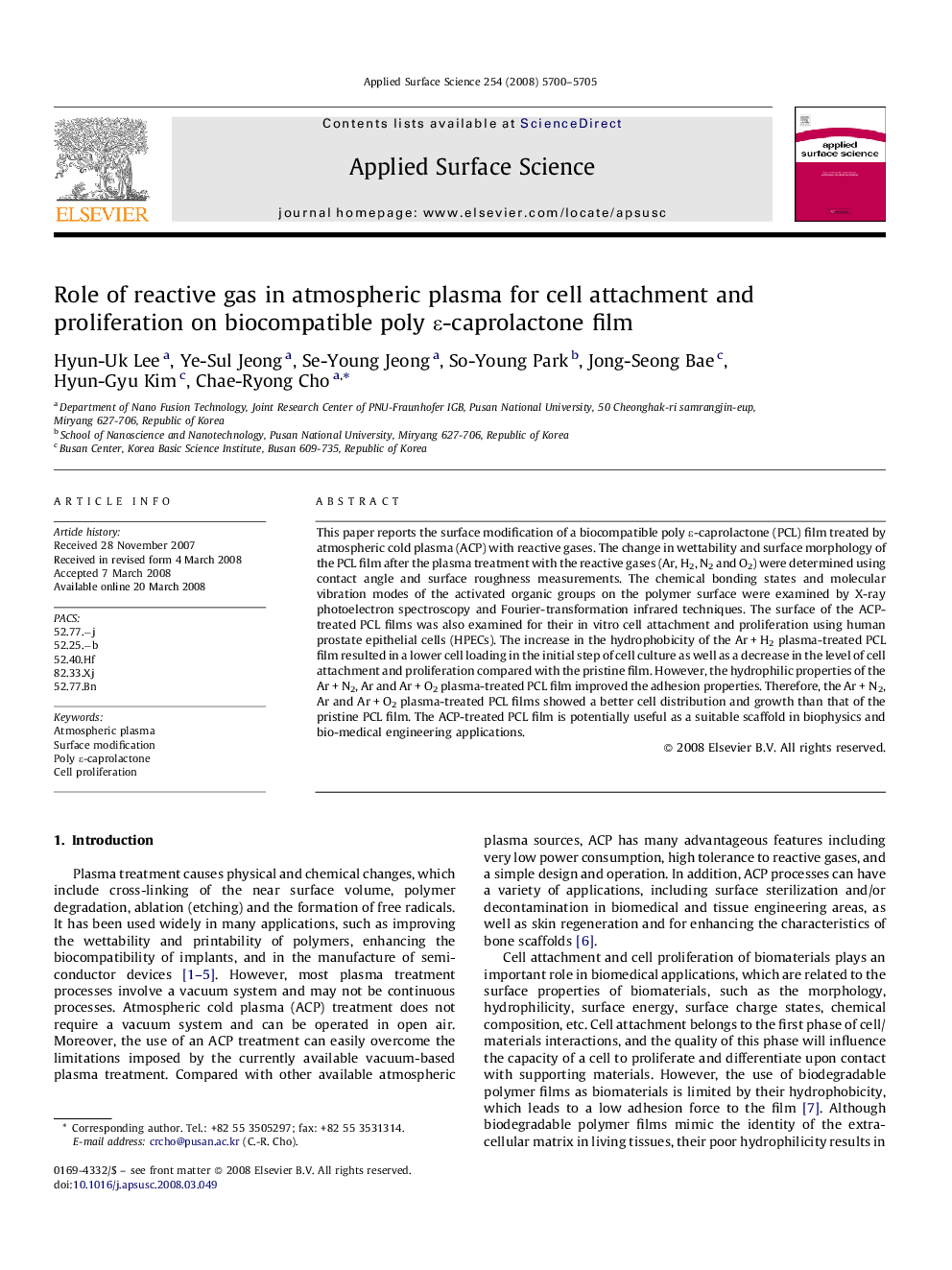| Article ID | Journal | Published Year | Pages | File Type |
|---|---|---|---|---|
| 5362361 | Applied Surface Science | 2008 | 6 Pages |
Abstract
This paper reports the surface modification of a biocompatible poly É-caprolactone (PCL) film treated by atmospheric cold plasma (ACP) with reactive gases. The change in wettability and surface morphology of the PCL film after the plasma treatment with the reactive gases (Ar, H2, N2 and O2) were determined using contact angle and surface roughness measurements. The chemical bonding states and molecular vibration modes of the activated organic groups on the polymer surface were examined by X-ray photoelectron spectroscopy and Fourier-transformation infrared techniques. The surface of the ACP-treated PCL films was also examined for their in vitro cell attachment and proliferation using human prostate epithelial cells (HPECs). The increase in the hydrophobicity of the Ar + H2 plasma-treated PCL film resulted in a lower cell loading in the initial step of cell culture as well as a decrease in the level of cell attachment and proliferation compared with the pristine film. However, the hydrophilic properties of the Ar + N2, Ar and Ar + O2 plasma-treated PCL film improved the adhesion properties. Therefore, the Ar + N2, Ar and Ar + O2 plasma-treated PCL films showed a better cell distribution and growth than that of the pristine PCL film. The ACP-treated PCL film is potentially useful as a suitable scaffold in biophysics and bio-medical engineering applications.
Keywords
Related Topics
Physical Sciences and Engineering
Chemistry
Physical and Theoretical Chemistry
Authors
Hyun-Uk Lee, Ye-Sul Jeong, Se-Young Jeong, So-Young Park, Jong-Seong Bae, Hyun-Gyu Kim, Chae-Ryong Cho,
